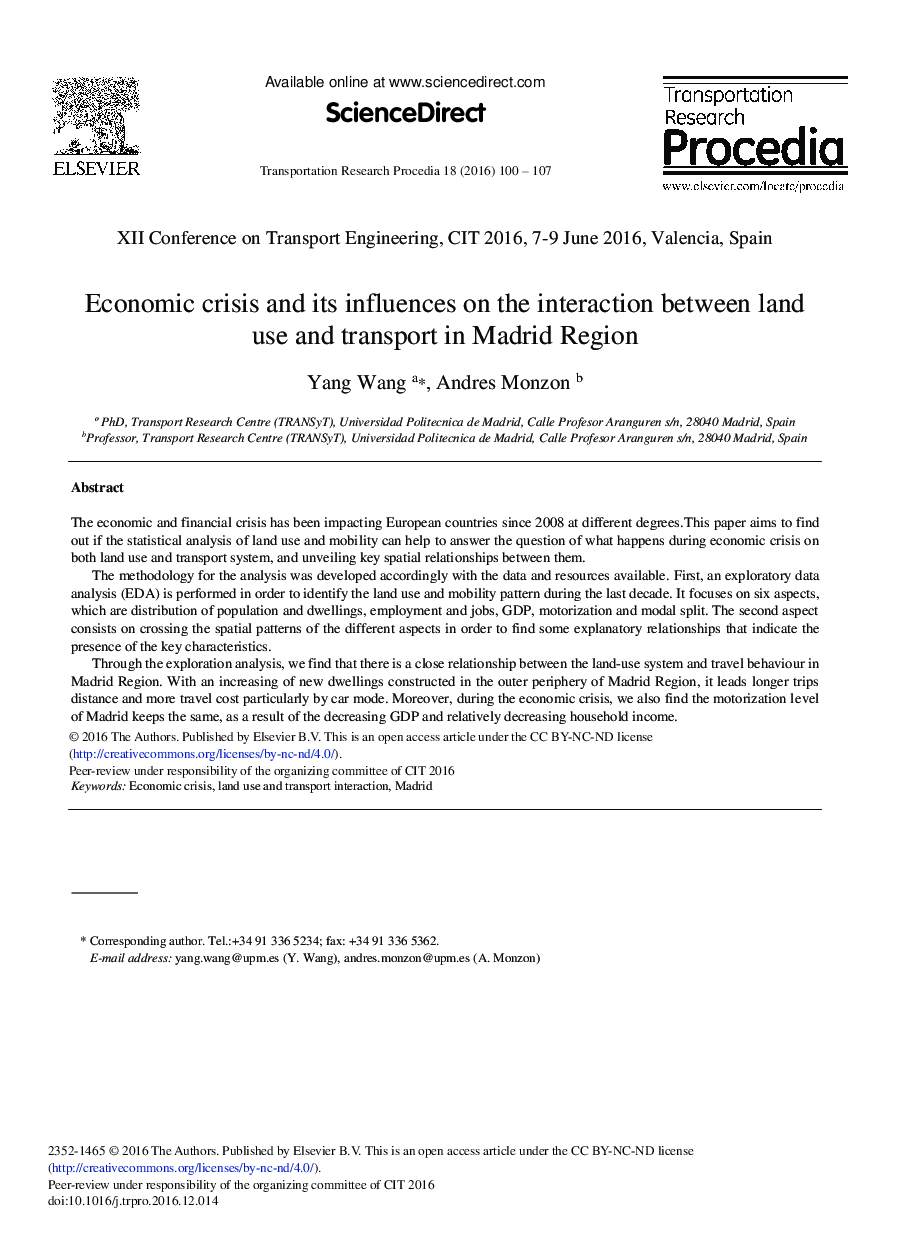| کد مقاله | کد نشریه | سال انتشار | مقاله انگلیسی | نسخه تمام متن |
|---|---|---|---|---|
| 5125643 | 1488277 | 2016 | 8 صفحه PDF | دانلود رایگان |

The economic and financial crisis has been impacting European countries since 2008 at different degrees. This paper aims to find out if the statistical analysis of land use and mobility can help to answer the question of what happens during economic crisis on both land use and transport system, and unveiling key spatial relationships between them.The methodology for the analysis was developed accordingly with the data and resources available. First, an exploratory data analysis (EDA) is performed in order to identify the land use and mobility pattern during the last decade. It focuses on six aspects, which are distribution of population and dwellings, employment and jobs, GDP, motorization and modal split. The second aspect consists on crossing the spatial patterns of the different aspects in order to find some explanatory relationships that indicate the presence of the key characteristics.Through the exploration analysis, we find that there is a close relationship between the land-use system and travel behaviour in Madrid Region. With an increasing of new dwellings constructed in the outer periphery of Madrid Region, it leads longer trips distance and more travel cost particularly by car mode. Moreover, during the economic crisis, we also find the motorization level of Madrid keeps the same, as a result of the decreasing GDP and relatively decreasing household income.
Journal: Transportation Research Procedia - Volume 18, 2016, Pages 100-107